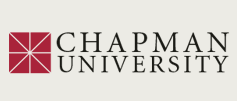Biological Degradation of Ethanol in Southern California Coastal Seawater
NOTICE: this is the author’s version of a work that was accepted for publication in Marine Chemistry . Changes resulting from the publishing process, such as peer review, editing, corrections, structural formatting, and other quality control mechanisms may not be reflected in this document. Changes may have been made to this work since it was submitted for publication. A definitive version was subsequently published in Marine Chemistry , volume 218, in 2019. https://doi.org/10.1016/j.marchem.2019.103703
The Creative Commons license below applies only to this version of the article.
Abstract
The increased use of ethanol as an additive in gasoline is expected to increase atmospheric ethanol levels. Understanding future impacts requires an understanding of the current atmospheric ethanol budget. Air-sea exchange is one of the largest sources of uncertainty in budget estimates. Understanding processes that produce or destroy ethanol in seawater will help constrain air-sea exchange estimates. The rate of biological consumption of ethanol in seawater was measured in Southern California surface coastal water sampled from a tidally flushed river mouth over a six-month period. First-order rate constants (k) for biological degradation of approximately ambient ethanol levels of 89 nM ranged from zero to 1.9 ± 0.1 × 10−2 min−1 with an average of 3.8 ± 5.9 × 10−3 min−1 (n = 20). This corresponds to an average biological turnover time (1/k) of approximately 4.4 h or an average biological half-life (0.693/k) of approximately 3 h. There were several rain events over this time period resulting in flow from upstream in the river; these were associated with increased bacterial levels, higher absorption coefficients and reduced salinity. Rate constants, in general, increased with the number of bacterial colony forming units in the water sample. Excluding the two rate constant maxima events the background biological degradation rate constant in the absence of rain/bacteria input from upstream, is 1.3 ± 1.0 × 10−3 min−1. This corresponds to an average biological turnover time of approximately 13 h and an average biological half-life of approximately 9 h. Autoclaved samples (to remove bacteria) showed no measurable ethanol degradation, suggesting that chemical loss processes are not significant.
